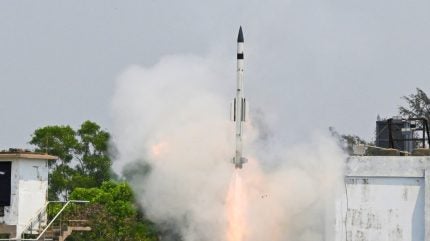
The Indian Navy and Defence Research & Development Organisation (DRDO) have completed a flight-test of the indigenously developed vertically-launched short-range surface-to-air missile (VL-SRSAM).
The test, conducted from the Integrated Test Range (ITR) in Chandipur, Odisha, showcased the missile’s near-boundary-low altitude interception capabilities.

Discover B2B Marketing That Performs
Combine business intelligence and editorial excellence to reach engaged professionals across 36 leading media platforms.
The missile was launched from a land-based vertical launcher, and engaged a high-speed aerial target at very close range and low altitude.
It successfully obliterated the target by performing the high turn rate necessary for engaging targets at close distances.
The successful interception demonstrated the missile’s agility, reliability, and precision.
The VL-SRSAM, designed as a shipborne weapon system, is intended to neutralise various aerial threats, including sea-skimming targets.

US Tariffs are shifting - will you react or anticipate?
Don’t let policy changes catch you off guard. Stay proactive with real-time data and expert analysis.
By GlobalDataAll weapon system elements, including the missile with its indigenous radio frequency seeker, multi-function radar, and weapon control system, were deployed in combat configuration and performed as expected.
The system’s performance was corroborated by flight data captured by various instruments developed by ITR Chandipur.
India Defence Minister Rajnath Singh said: “Termed the missile system as proof of India’s strong design and development capabilities in defence R&D. It will be an excellent force multiplier for the Indian Navy.”
Department of Defence research and development secretary and DRDO chairman Samir V Kamat noted the newly developed missile is set to enhance the technological capabilities of the armed forces.
This recent launch follows two previous successful trials of the VL-SRSAM in September 2024 and August 2022.
The 2024 trial aimed to validate the weapon system’s updated components, such as the Proximity Fuse and Seeker technology.
The 2022 trial focused on monitoring the flight path and vehicle performance parameters using an array of range instruments, including radar, electro-optical tracking systems, and telemetry systems.



